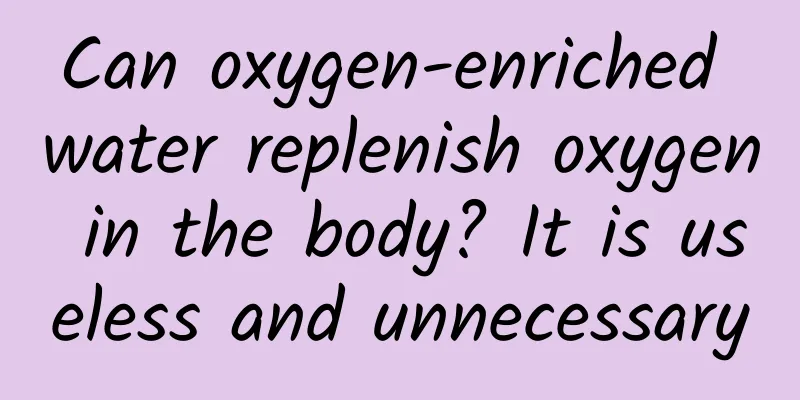How the Green Giant of Carbon Storage Can Resist an Unstable Climate System

|
Recently, my country has been affected by strong cold air, and many parts of the country have experienced strong winds and cooling weather, with local temperatures dropping by more than 14°C. Compared with previous years, it can be said that winter is coming at a fast pace. This instability of the meteorological system is closely related to global warming. Carbon content is an unavoidable topic when talking about global warming. Today we will talk about the once-overlooked carbon storage powerhouse - mangroves. In 2020, after General Secretary Xi Jinping officially announced China's "dual carbon" goals, "green carbon" and "blue carbon" frequently appeared in major media. The mangroves we are going to talk about today are the main force in achieving "dual carbon". Why are evergreen plants called mangroves? Mangroves are evergreen shrubs or trees, most of which grow in coastal waters and estuaries, but are also common in inland waters. Mangroves are rare trees and are a nationally protected species in China. Some people may ask, since mangroves are evergreen plants, and the common mangroves we see are all green, why are they called mangroves? This is the special feature of mangroves. This tree can change color because the bark of mangrove plants contains a substance called tannic acid. When this substance reaches a certain amount, the tree will appear red after oxidation, so it is called a mangrove. Mangrove seedlings Plants can also give birth to live young Mangroves can be called "tough trees". First of all, they grow by the sea, with deep roots and lush leaves, and can absorb moisture from the sea water for their own thriving growth. Their toughness is also reflected in their special way of reproduction, which is the "viviparous phenomenon" rarely seen in other plants. The seeds of mangroves will germinate on the mother tree, and when they grow into seedlings, they will automatically fall off, fall into the sea water, insert into the mud and sand, and then develop on their own and grow into a small tree. Even if it encounters a tide and is swept away by the sea water, when the sea water recedes, we will be surprised to find that these seedlings can also adapt to the circumstances and take root and grow elsewhere. This is one of the most amazing characteristics of mangroves. Mangroves are also divided into many varieties, with about 50 species in the world, and more than 30 species in my country. Dense mangroves in Haidian, Australia What is the function of mangroves? The United Nations' Blue Carbon: An Assessment of the Carbon Sequestration Role of a Healthy Ocean points out that more than half (55%) of the biocarbon or green carbon on Earth is captured by marine organisms, which means that the ocean is the largest carbon pool on Earth. Among these marine organisms, there are mangroves that we are talking about. Mangroves grow on the mudflats and shallows at the junction of land and sea, and are a special ecosystem that transitions from land to sea. Being strong and responsible is an outstanding quality of mangroves. Mangroves have a very resounding title, which is the coastal guard. Mangroves stand on the seashore, consolidate the shore and embankment, purify seawater and air, and play a significant role in protecting the lives and property of people along the coast. Mangrove forest with clear water Mangrove Ecological Environment in Harmony with Humans Mangroves are one of the most diverse ecosystems in the world. There are more than 100 species of fish, shrimp, shellfish, crabs, and insects living here. There are also countless species of phytoplankton and algae growing around the mangroves. With such a good food chain, many aquatic animals come to the mangroves to forage, live, and reproduce. Various seabirds will also find their food and live here. Hermit crabs living in mangroves In the mangroves, we often see various birds, such as egrets, great egrets and seagulls; we see some beautiful shellfish and snails, and even cuter are the hermit crabs that use shells and snail shells as their homes. At high tide, we can also see many colorful and cute shallow-water fish swimming in the mangroves, as well as tree-climbing tidal flat fish and amphibious frogs. In some mangroves, people occasionally find wild boars and some small mammals. These land animals appear here, making the mangroves a real paradise for animals from land, sea and air! Xiamen City attaches great importance to the construction of mangrove ecosystems and cultivates mangroves, attracting egrets to dance here. my country has abundant mangrove resources, and the mangroves distributed in Guangxi, Guangdong, Taiwan, Hainan, Fujian and the southern coast of Zhejiang are very distinctive. Guangxi Autonomous Region has the richest mangrove resources. The Green Giant of Carbon Storage Green plants on land absorb and fix carbon dioxide in the air through photosynthesis, releasing oxygen, which is called "green carbon". The most common green carbon is concentrated in forests and grasslands. Our earth is a blue earth. The process, activities and mechanisms of using marine activities and marine life to absorb carbon dioxide from the atmosphere and fix and store it in the ocean are called "blue carbon". The mangroves, seagrass beds and coastal salt marshes we are talking about are collectively called the "three major coastal blue carbon ecosystems." The dense mangroves at the mouth of the Jiulong River in Fujian play a role in carbon sequestration So what is the carbon sequestration mechanism of mangroves? Mangroves can be the main force of both green carbon and blue carbon. As plants, mangroves, like forests and grasslands, absorb and fix carbon dioxide in the air through photosynthesis, release oxygen, and play the role of green carbon. On the other hand, mangroves are mostly distributed in sedimentary coastal estuaries. Under the combined action of upstream rivers and ocean tides, a large amount of exogenous carbon is washed downstream to the coast and estuaries. After being captured by mangroves along the coast and estuaries, these carbons are accumulated layer by layer in the sediments where the mangroves' tangled roots are located. Due to periodic flooding, the mangrove sediments that have been in an anaerobic state for a long time, as well as the fallen leaves and some rotten roots of the mangroves, decompose slowly due to lack of oxygen, which buries the carbon deeply for a long time. In some areas, the mangrove peat can even reach a depth of more than ten meters. These are huge carbon storage reservoirs. Huge carbon reservoir With the introduction of "blue carbon", the protection of mangrove ecosystems, which are the main force in achieving "blue carbon", has also received increasing attention. Zhuhai, Zhanjiang, Shenzhen in Guangdong, Dongzhaigang in Hainan, Shankou in Guangxi and Zhangjiangkou in Fujian are all places where mangrove protection is relatively well done. What can we do to protect mangroves? Coastal blue carbon ecosystems have multiple functions and provide many benefits, but they are also the most endangered ecosystems on Earth. We need to protect mangroves. First, we should consciously reduce pollution to the marine environment and not litter everywhere. Especially during the current epidemic, the random discarding of masks has caused great harm to the marine ecology. We should protect the beach environment and prevent garbage from being swept into the ocean, polluting the environment where mangroves grow. Second, we should not catch and protect marine life growing in mangroves at will, which will destroy the balance of marine ecology. In particular, if you see beautiful conchs or beautiful shrimps and crabs, you should not take them home. Third, we should learn more about marine protection, expand our understanding of the ocean, and be a good propagandist for protecting the ocean. Fourth, we should actively support and participate in marine protection activities, such as planting mangroves, seagrass and corals. Mangroves thrive under the setting sun (Source: Earthquake Three-Point WeChat Official Account 2021-10-25) |
<<: Why do we sometimes wake up from sleep with a loud noise? It may be related to this...
>>: Art in time: Boolean, Rococo, Chinese style... just ask you if it is beautiful or not
Recommend
The first year of in-car AI: Volkswagen and BMW both rely on large American models, while domestic car companies develop their own or cooperate with Baidu
During CES 2024, Volkswagen of Germany announced ...
APP promotion: This should be the most complete ground promotion plan!
APP promotion online promotion is important, but ...
How to promote your products effectively?
In most cases, many people are easily influenced ...
93% of marketers are troubled by product copywriting. These two tricks can help you solve it easily.
Even a bad product can be popular with good copyw...
What are the channels for online promotion of Zhangye educational institutions?
The development of the Internet has a history of ...
How to set up the live streaming of massive Qianchuan delivery?
If you want to achieve good results when broadcas...
How to make reasonable use of 3 types of ground promotion methods?
A few days ago, when I passed the Gaoxinyuan subw...
Heavy rain hits Shandong and Henan! Heavy rain "rushes" into the north, beware of the sudden change from drought to flood
Since July 7, Shandong, Henan, Sichuan and other ...
Is Meizu mobile phone still alive? Does it have a chance to rise again?
On Weibo, there is a classic question with a play...
ZTE Grand SII LTE first test
At CES 2014, ZTE officially released and exhibited...
List of confirmed communities in Shanghai in 2022: Which communities have confirmed cases? Attached the latest news
Currently, the local epidemic in Shanghai is in a ...
Is it a necessity or a gimmick? If you love games, do you really need a gaming phone?
654 million players contribute 209.6 billion yuan...
Heartbroken! Two boys in Hangzhou drowned in swimming pools! Pediatric experts: In addition to rivers and ponds, swimming pools have become a high-risk area for drowning
Summer vacation is here and the heat is unbearabl...
Font size is bigger and clearer! WeChat: Nearly 4.07 million users have activated caring mode
[[427576]] News on October 8, today, WeChat offic...
The self-revolution of the small circle Meizu Note 2 hands-on experience
In addition to the ultra-narrow bezels and slight...









